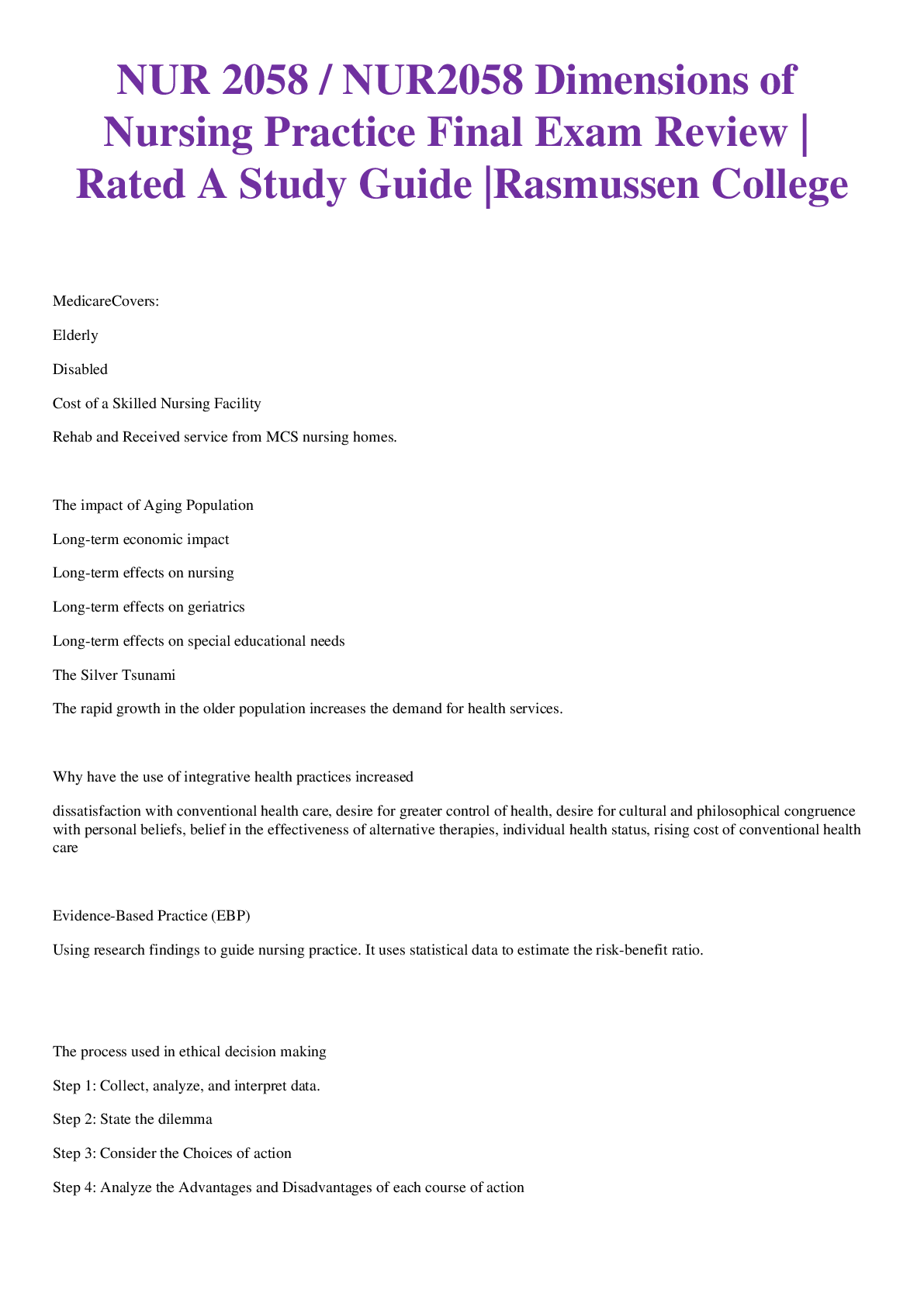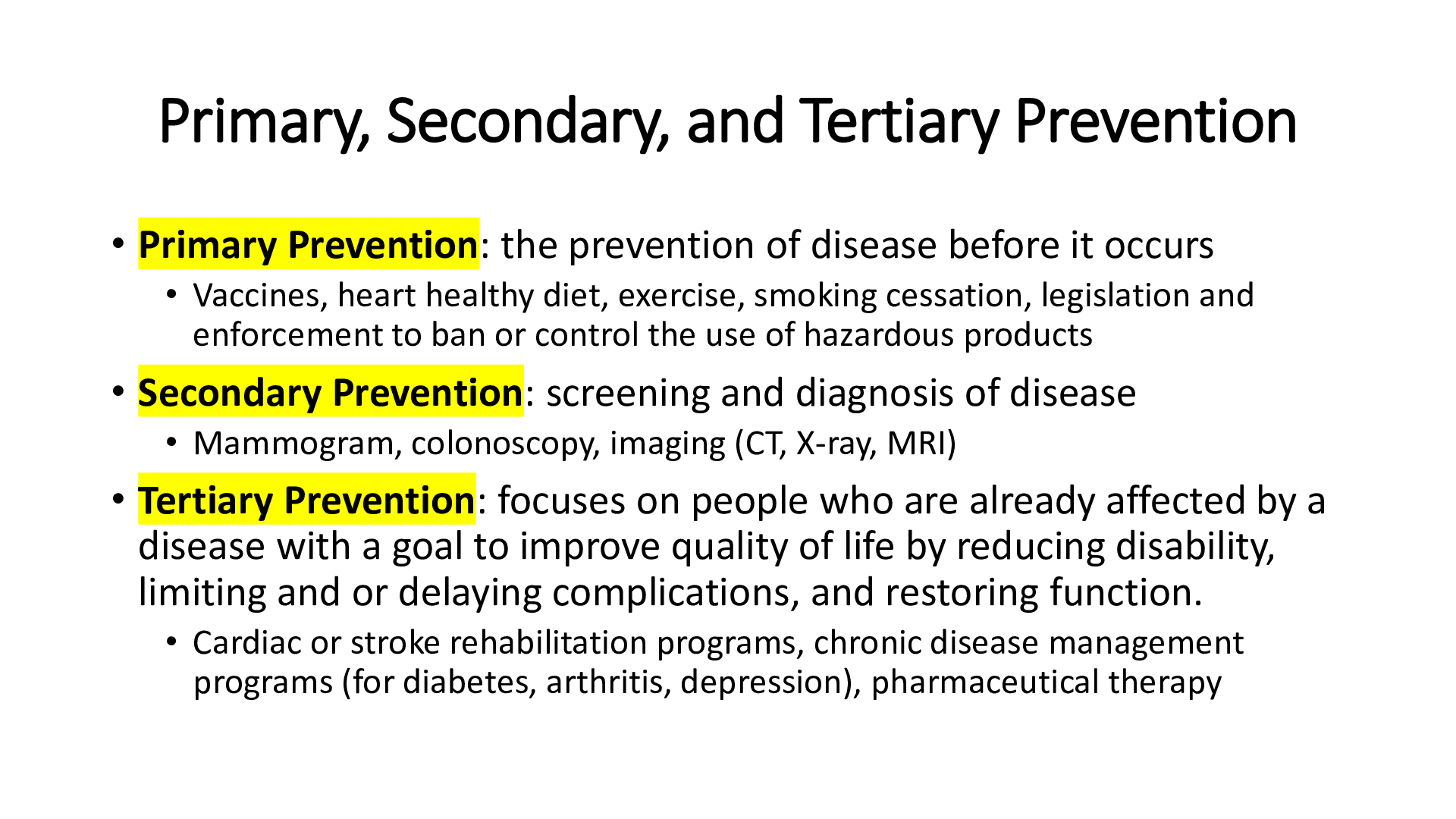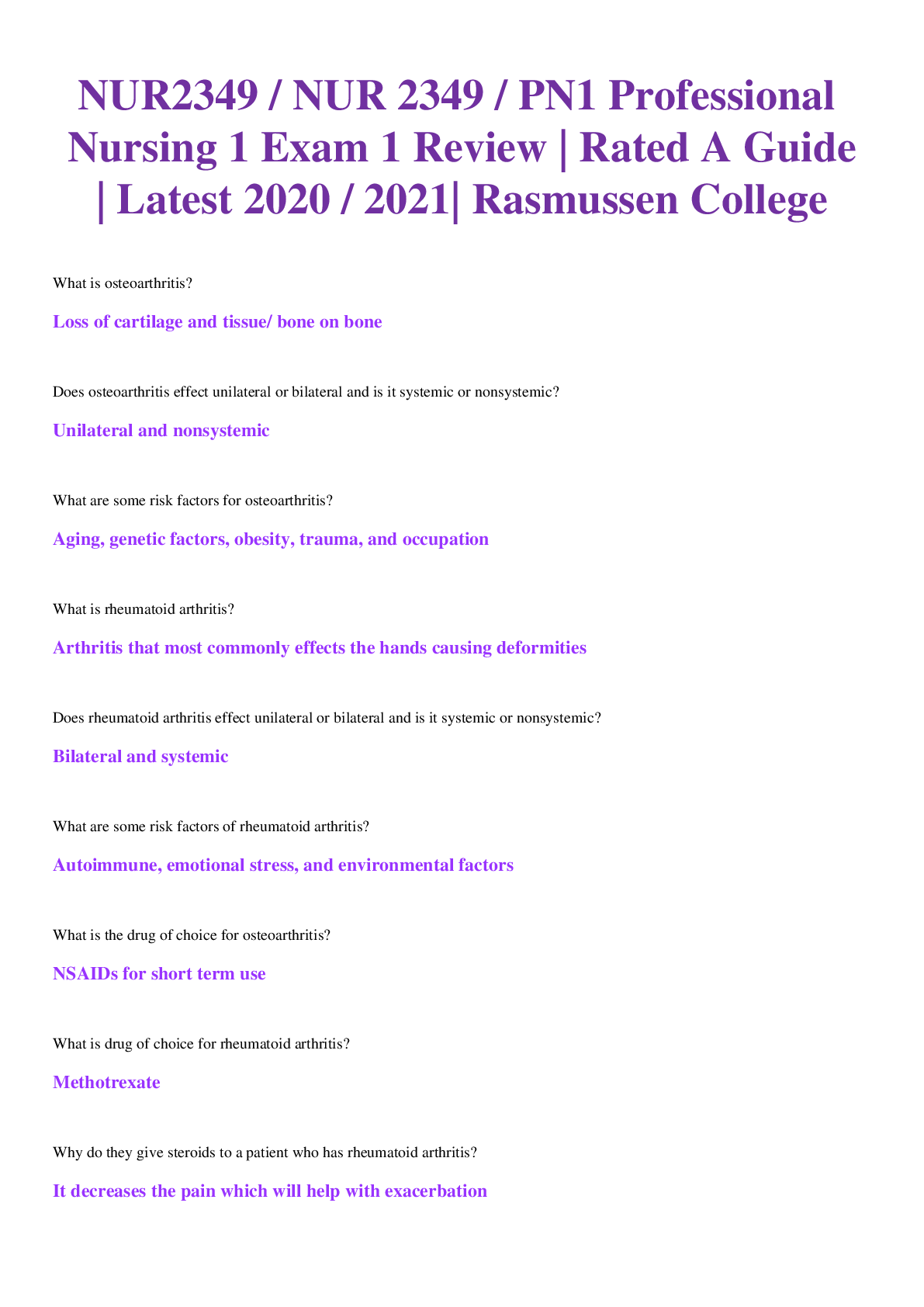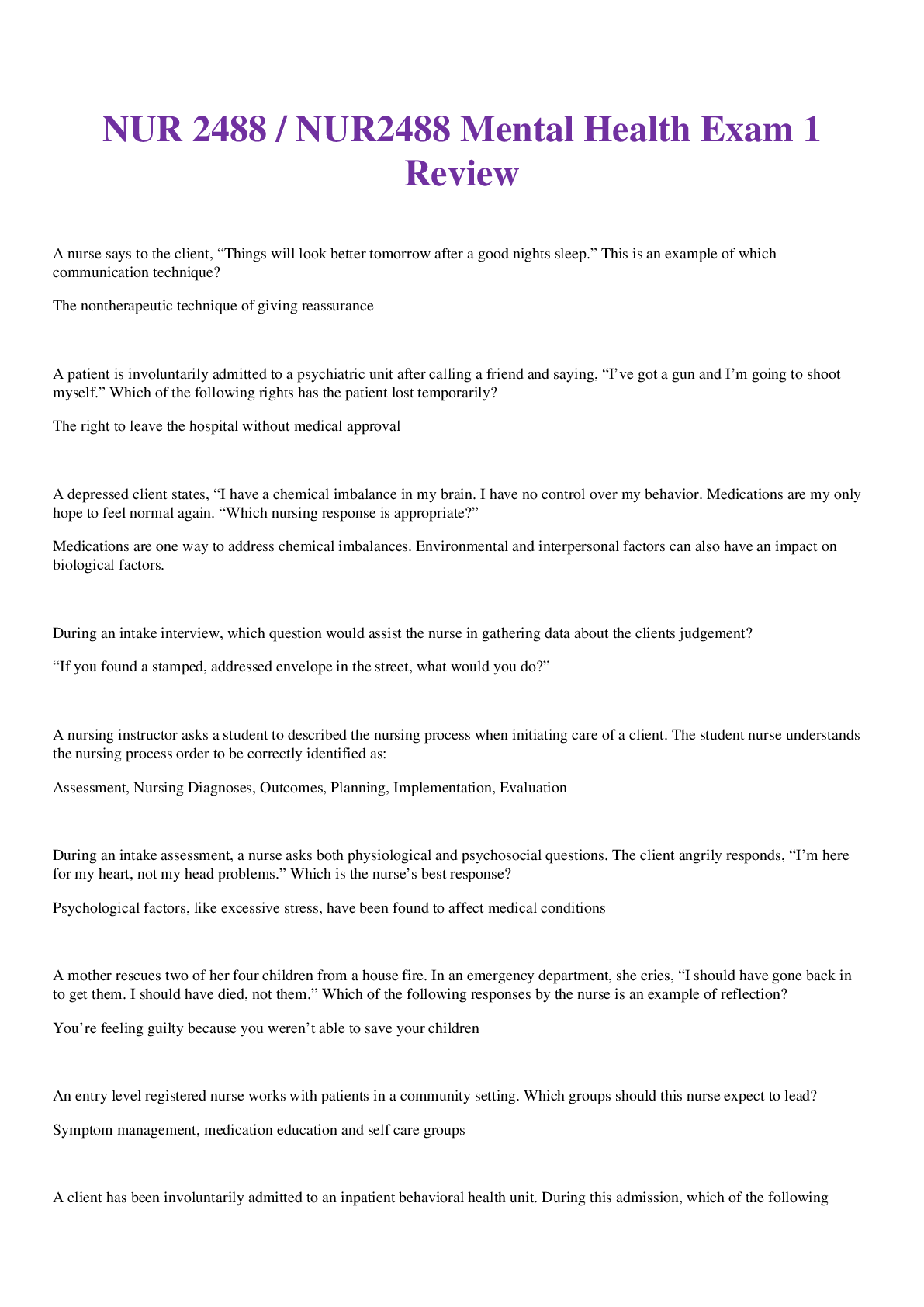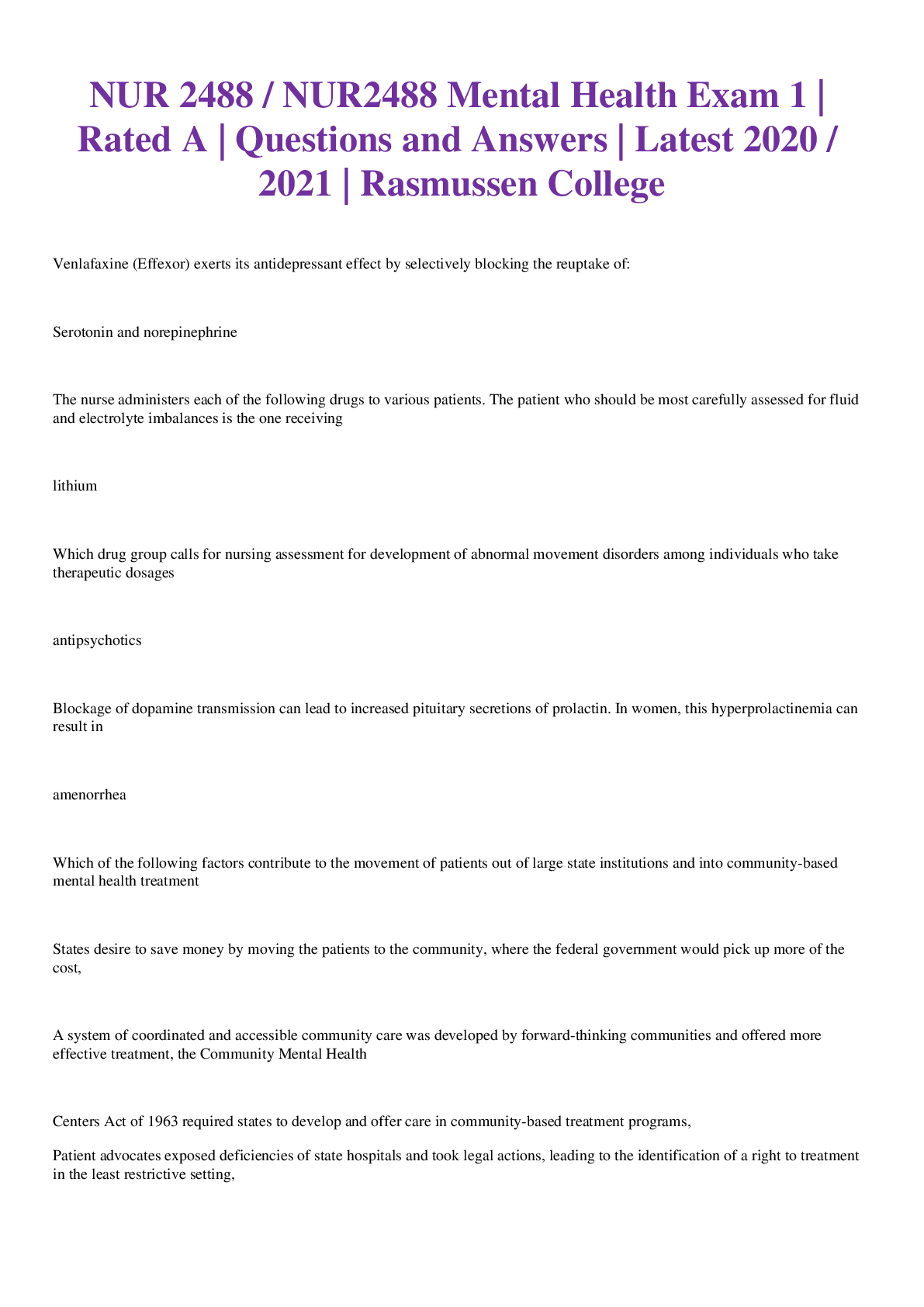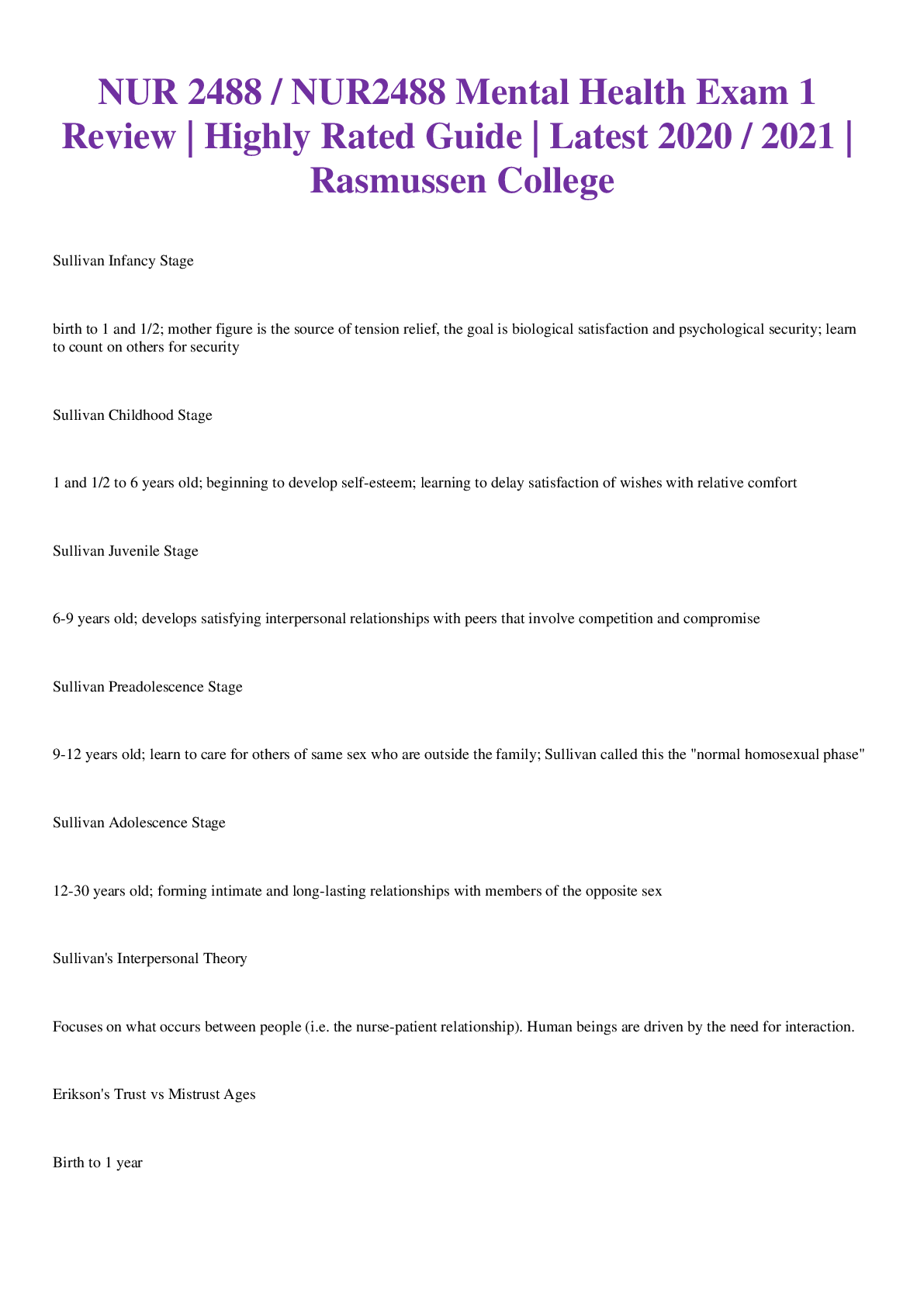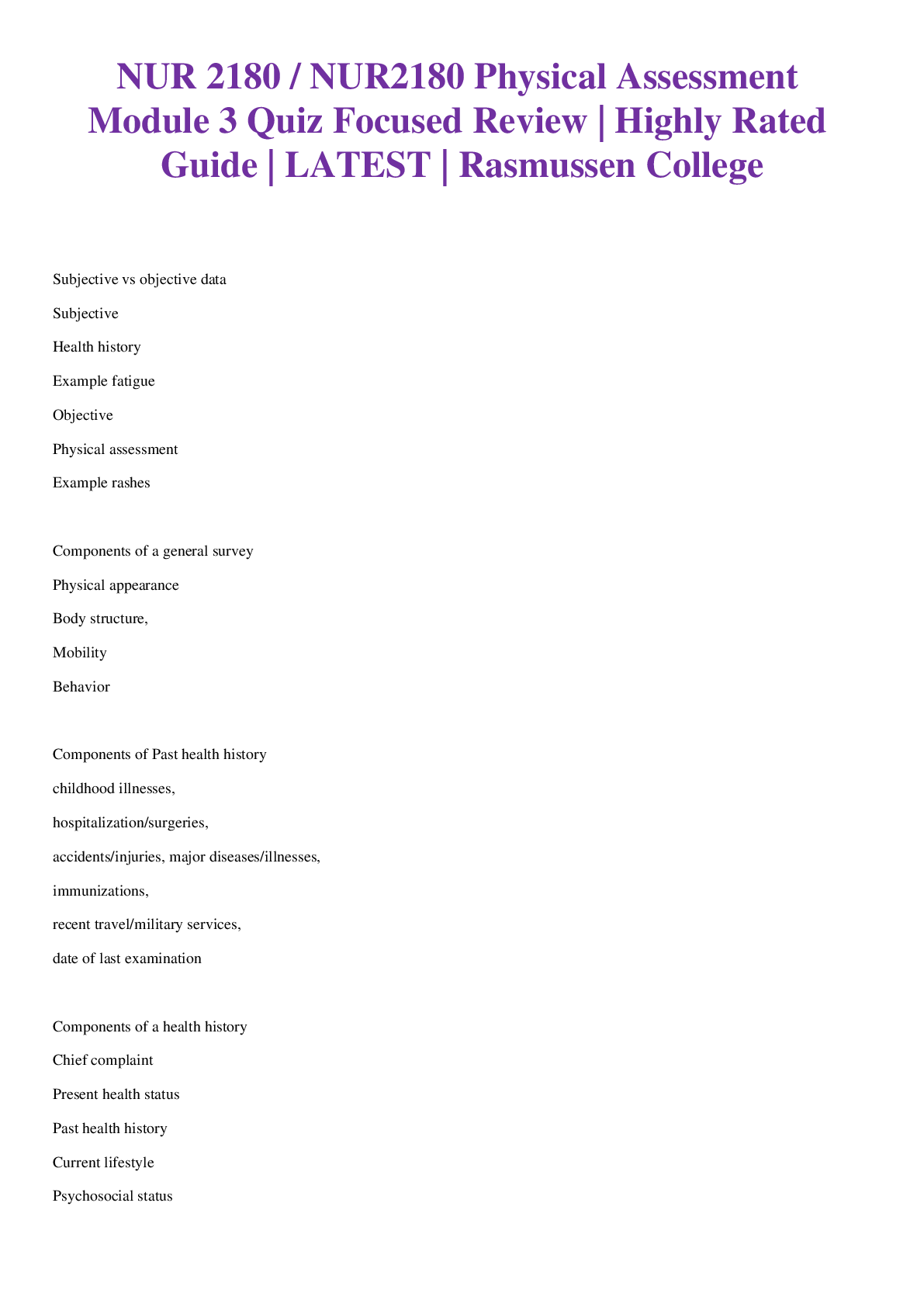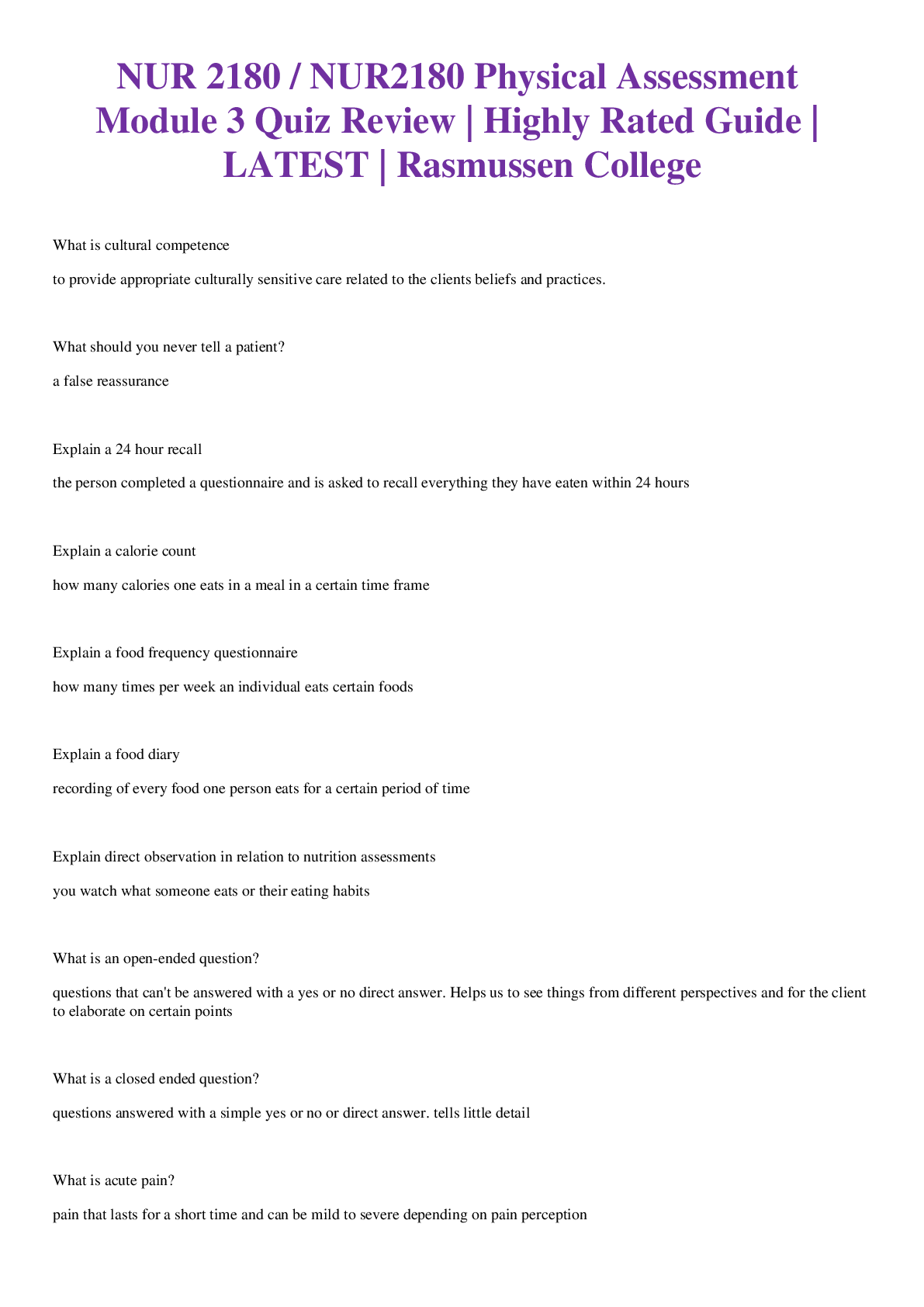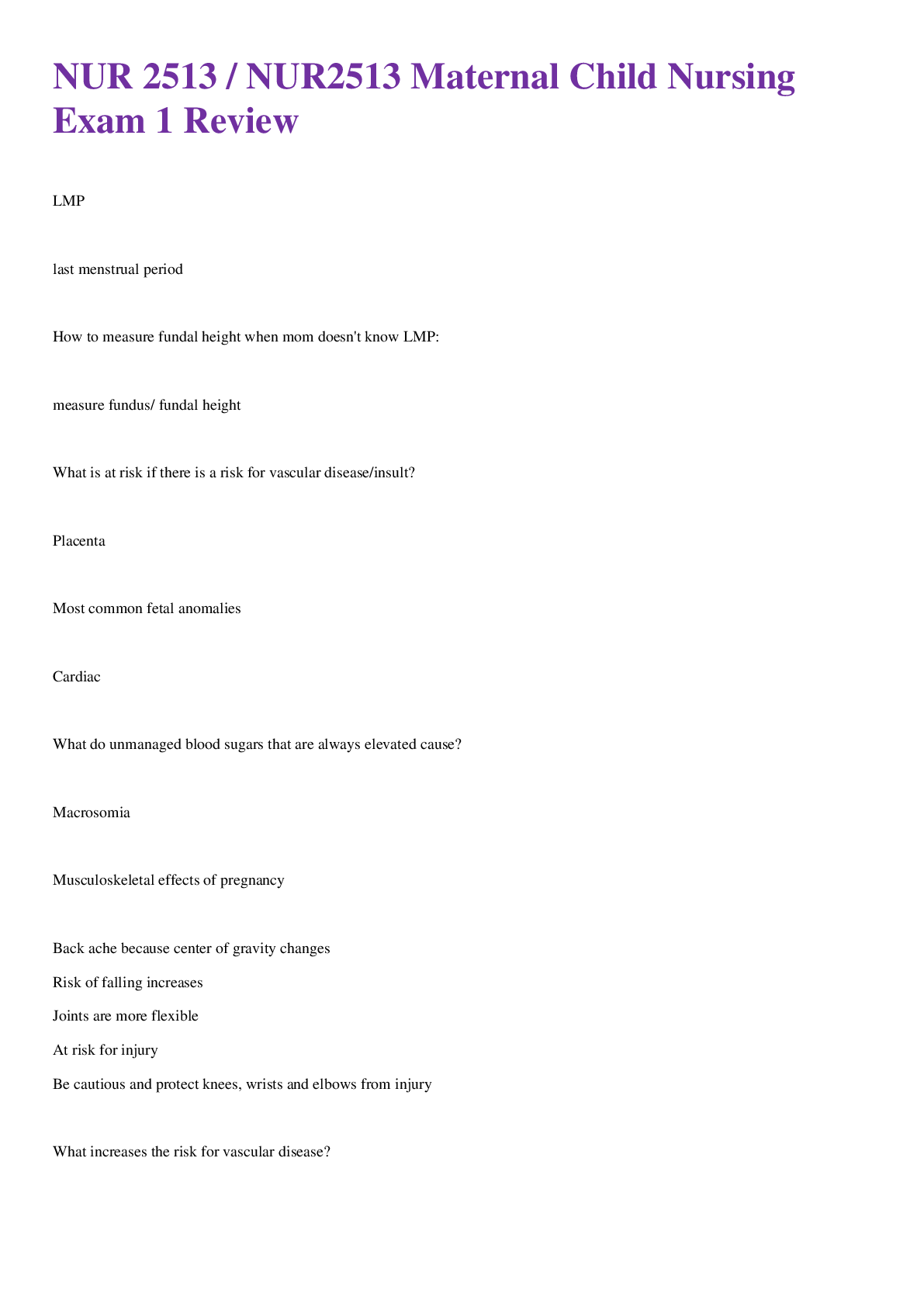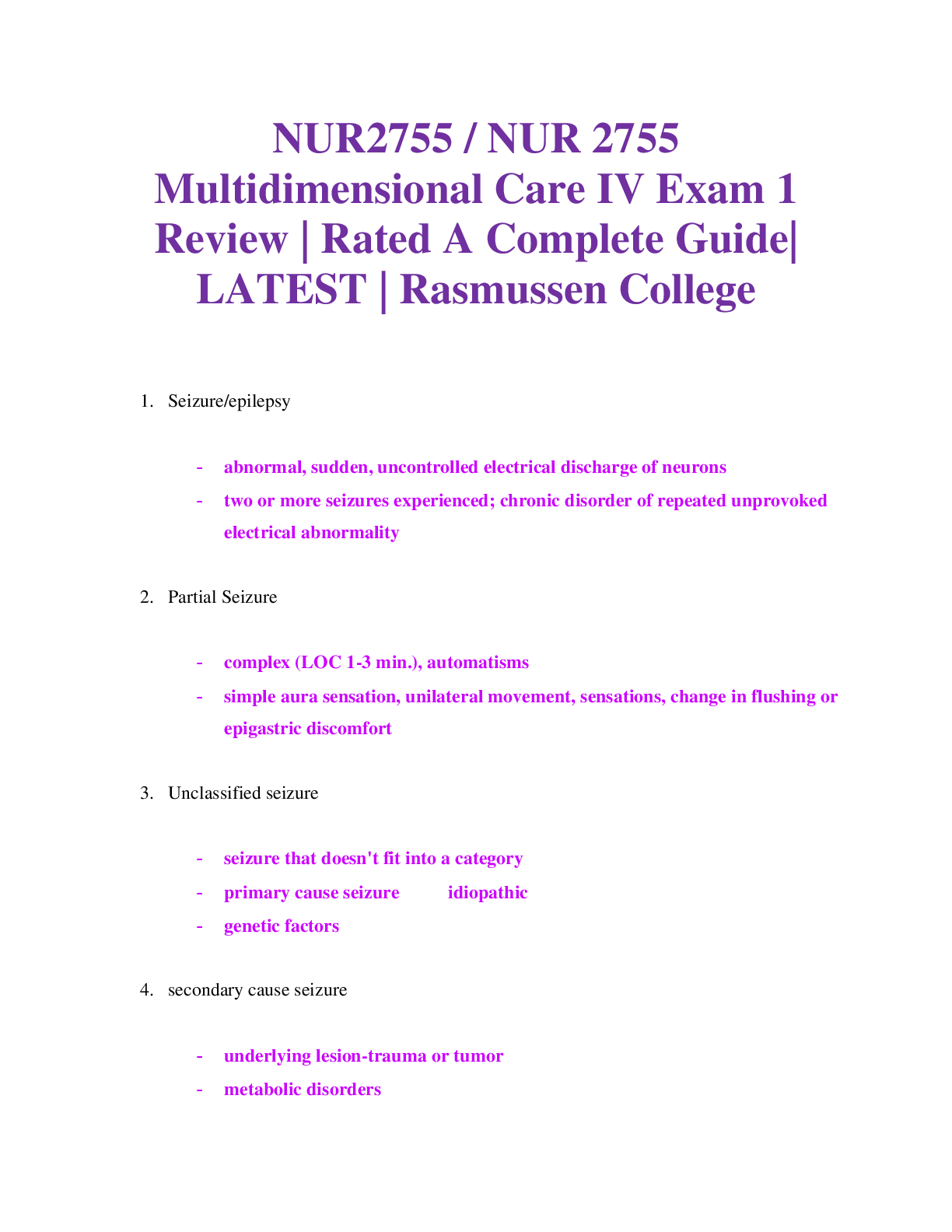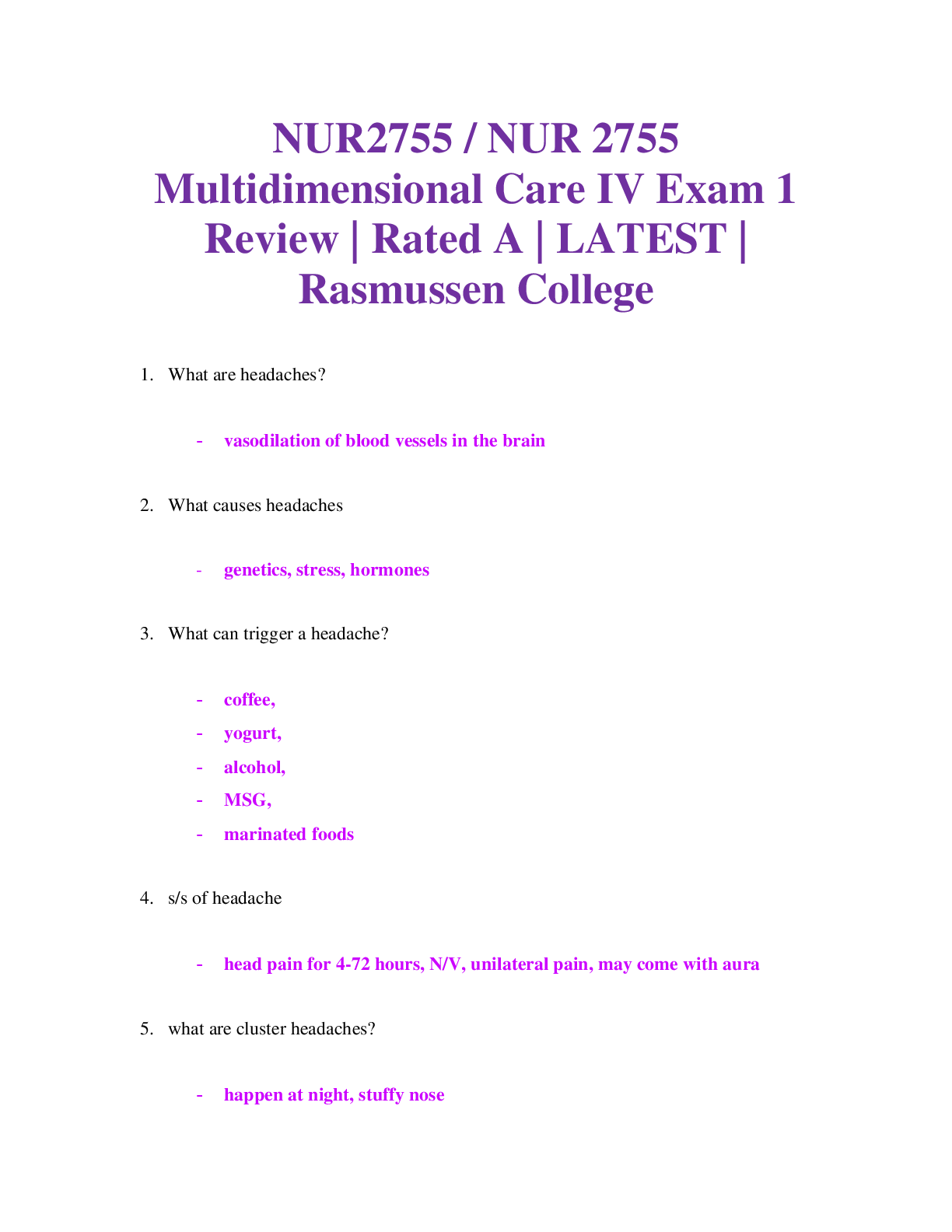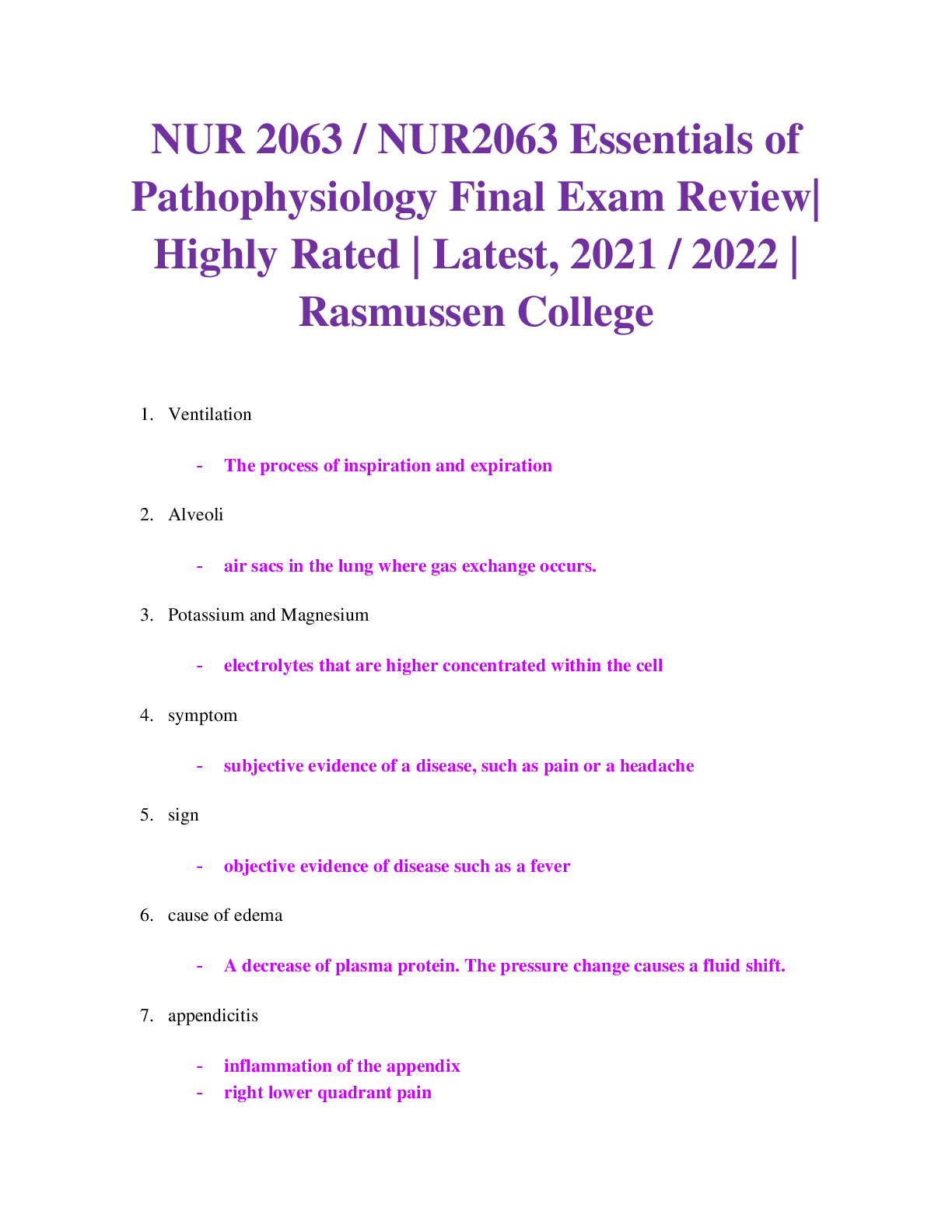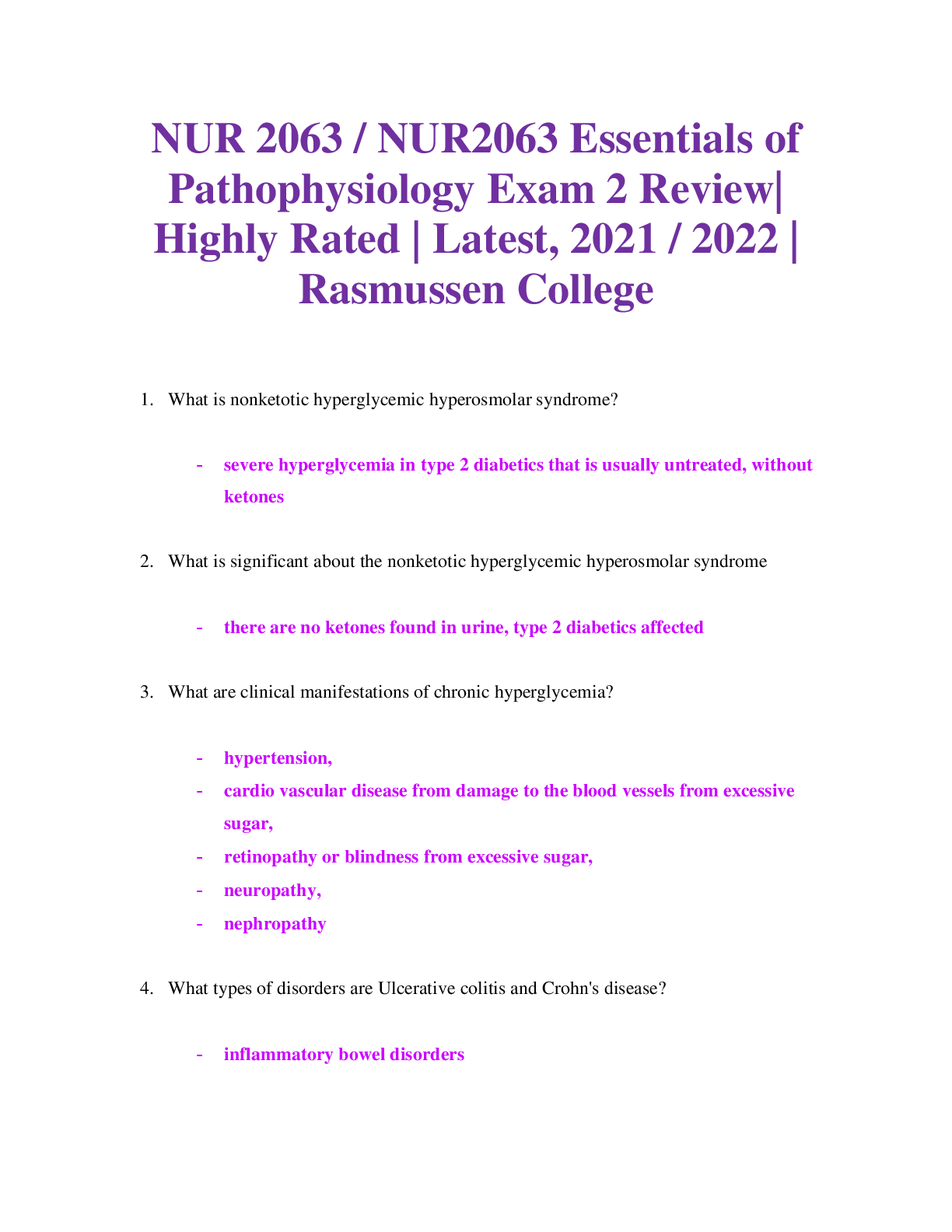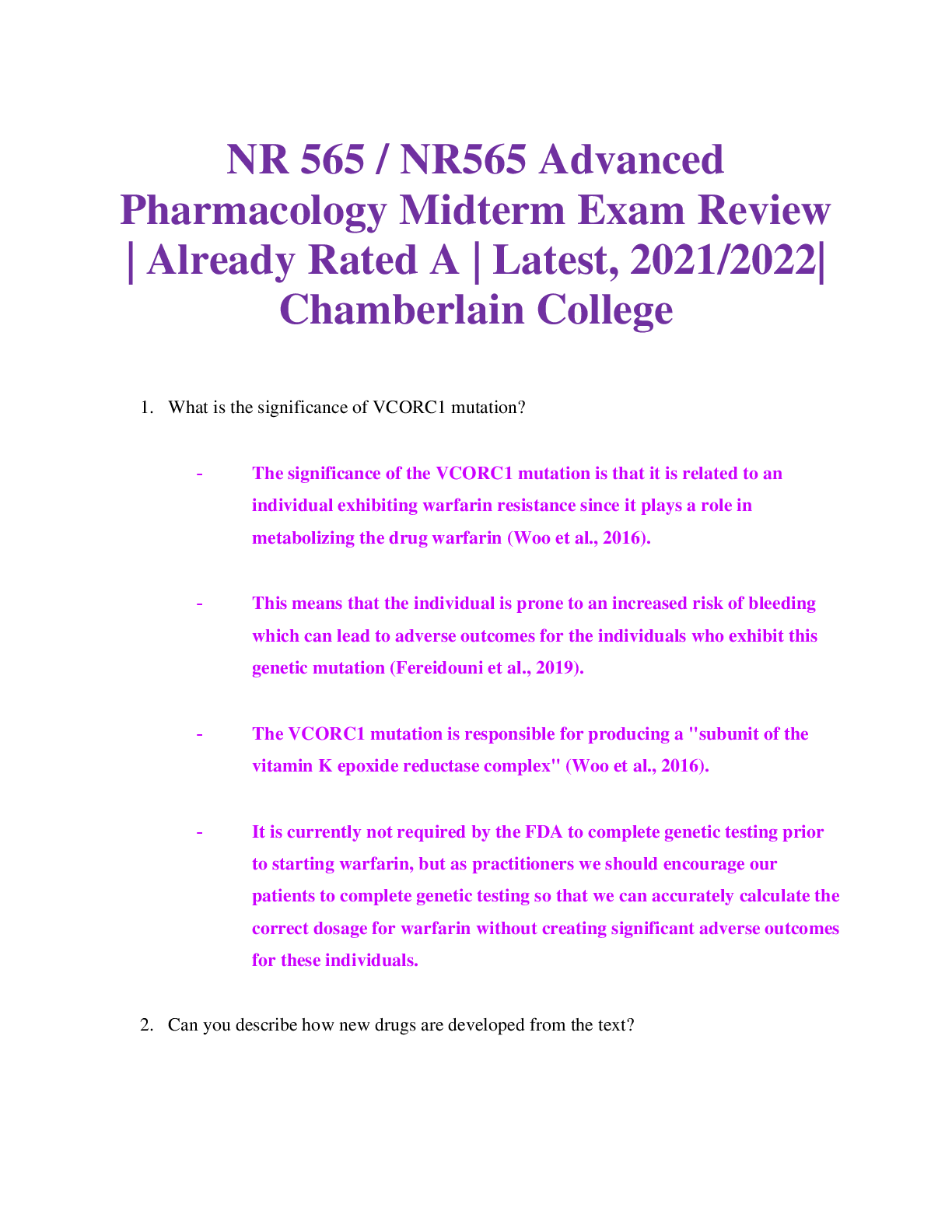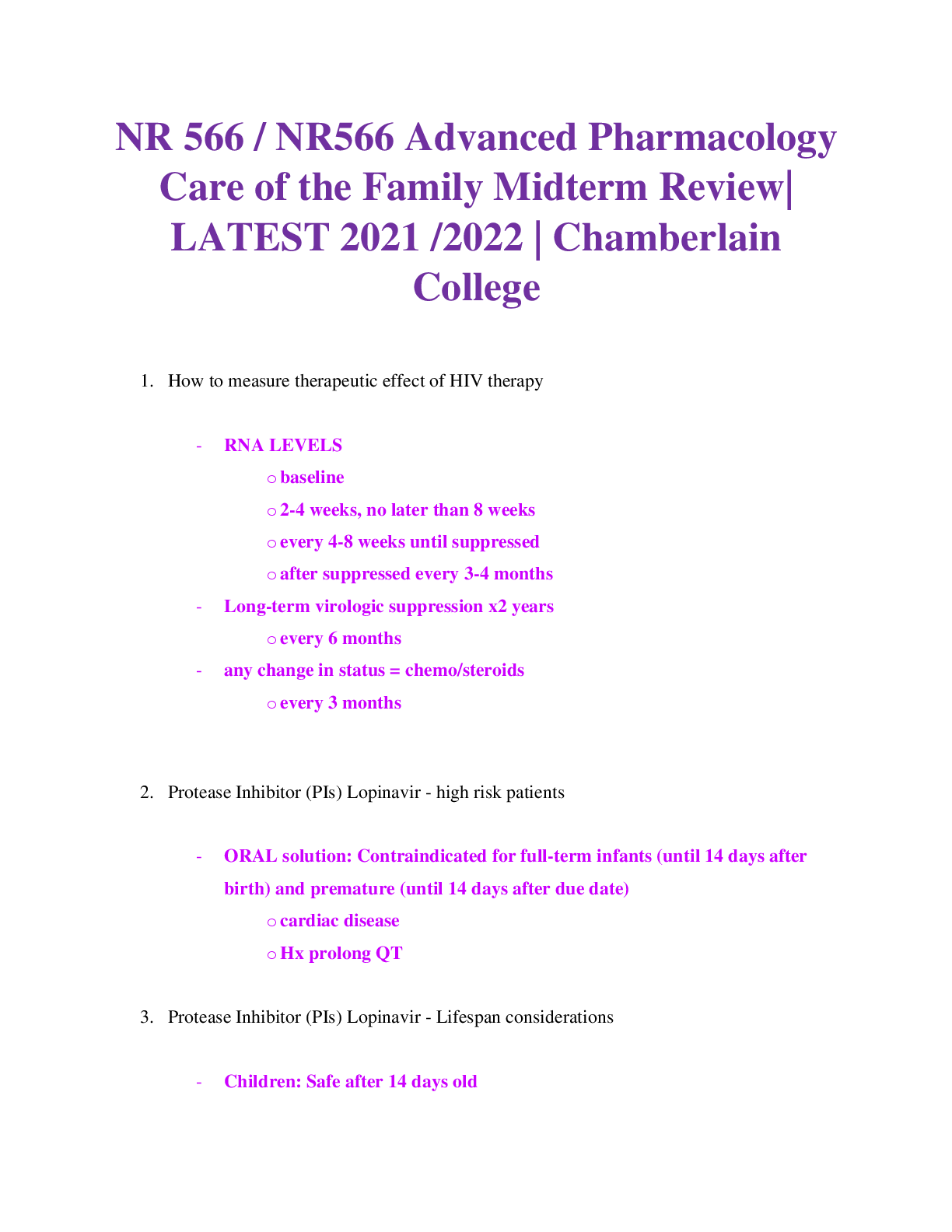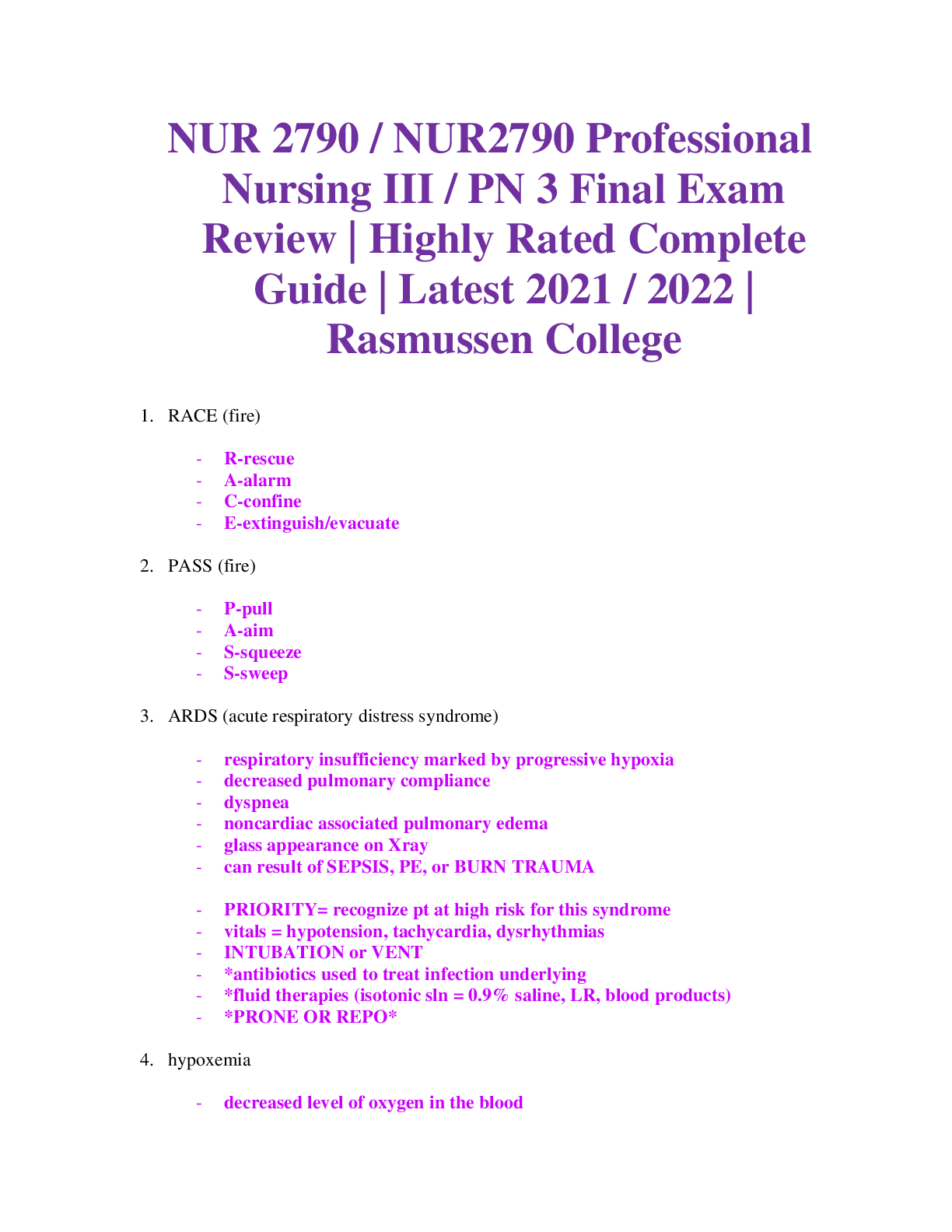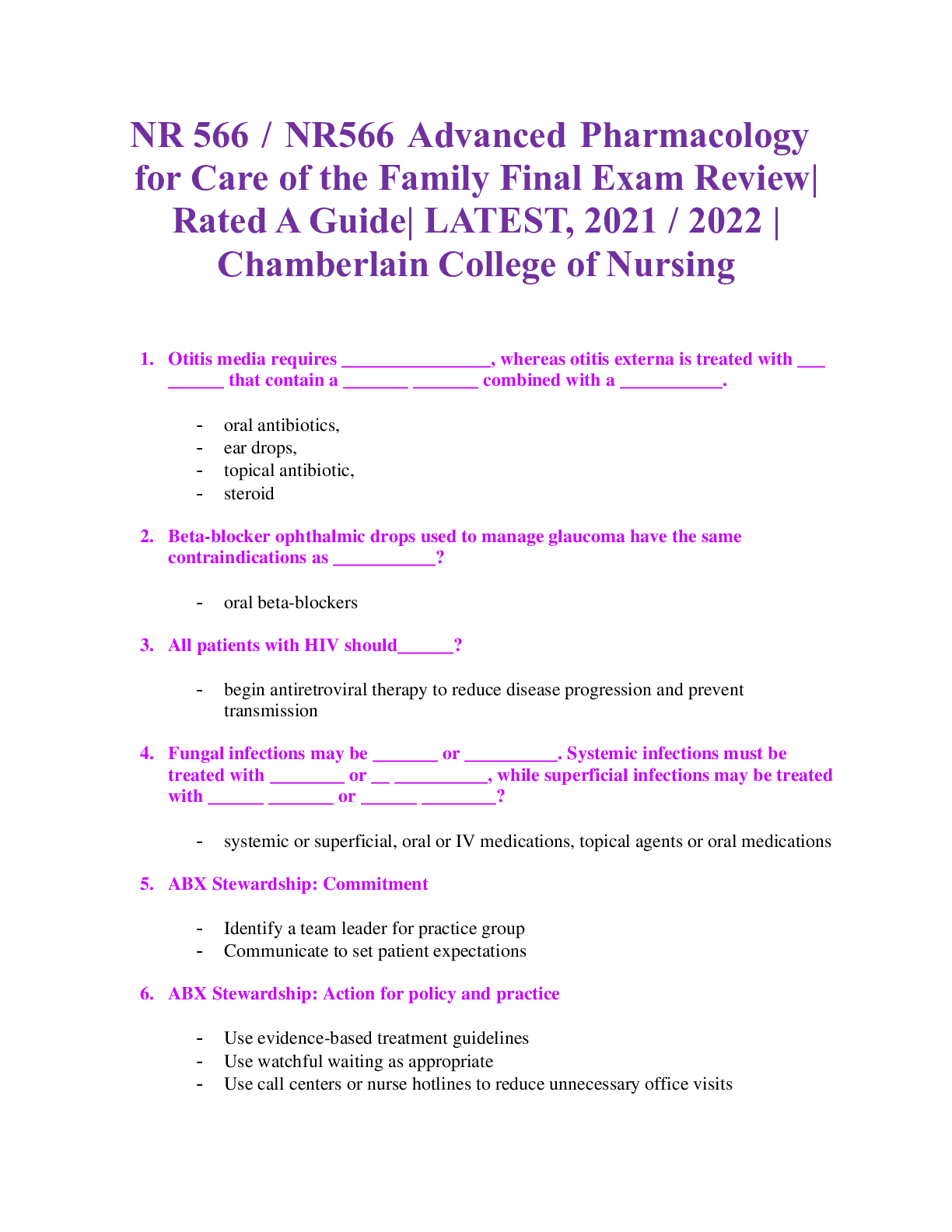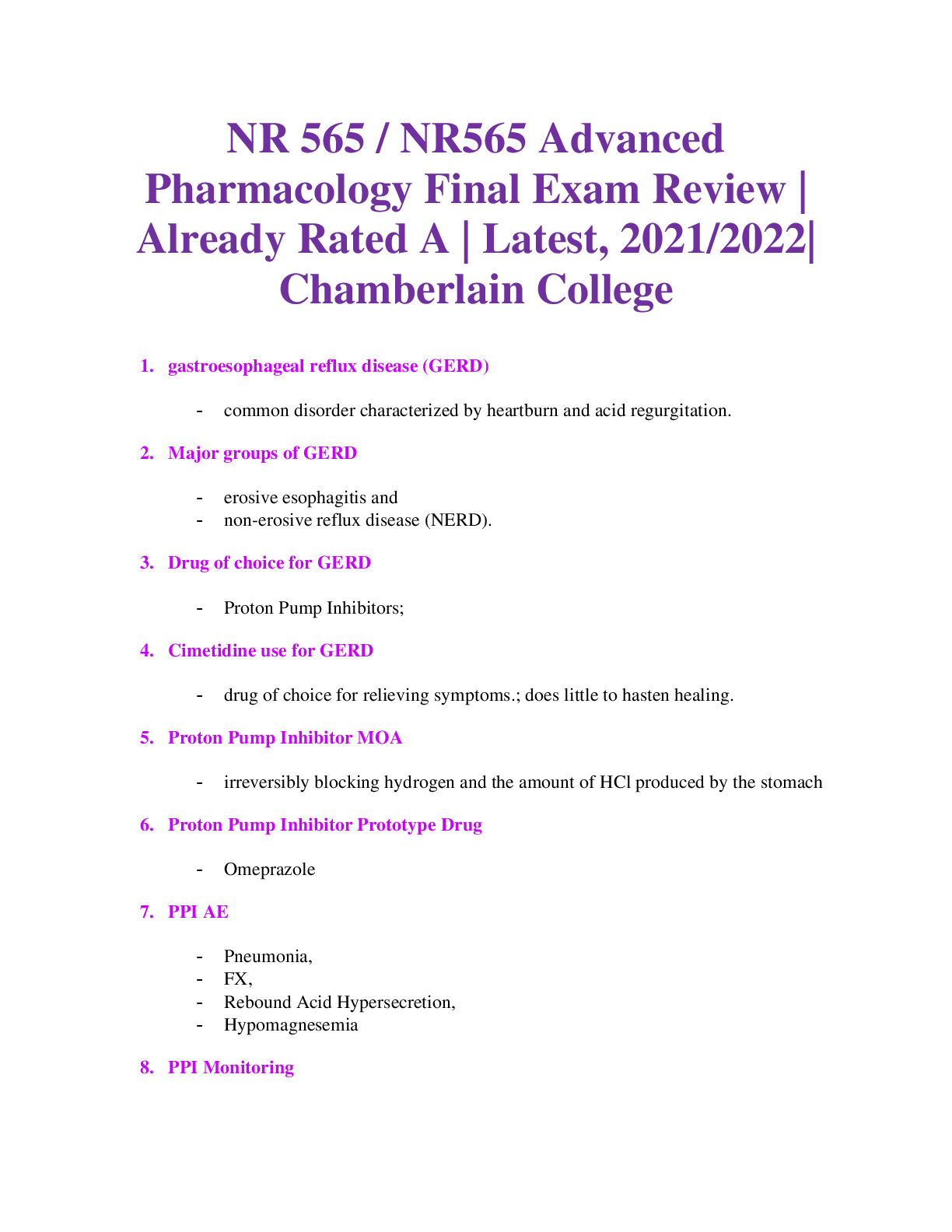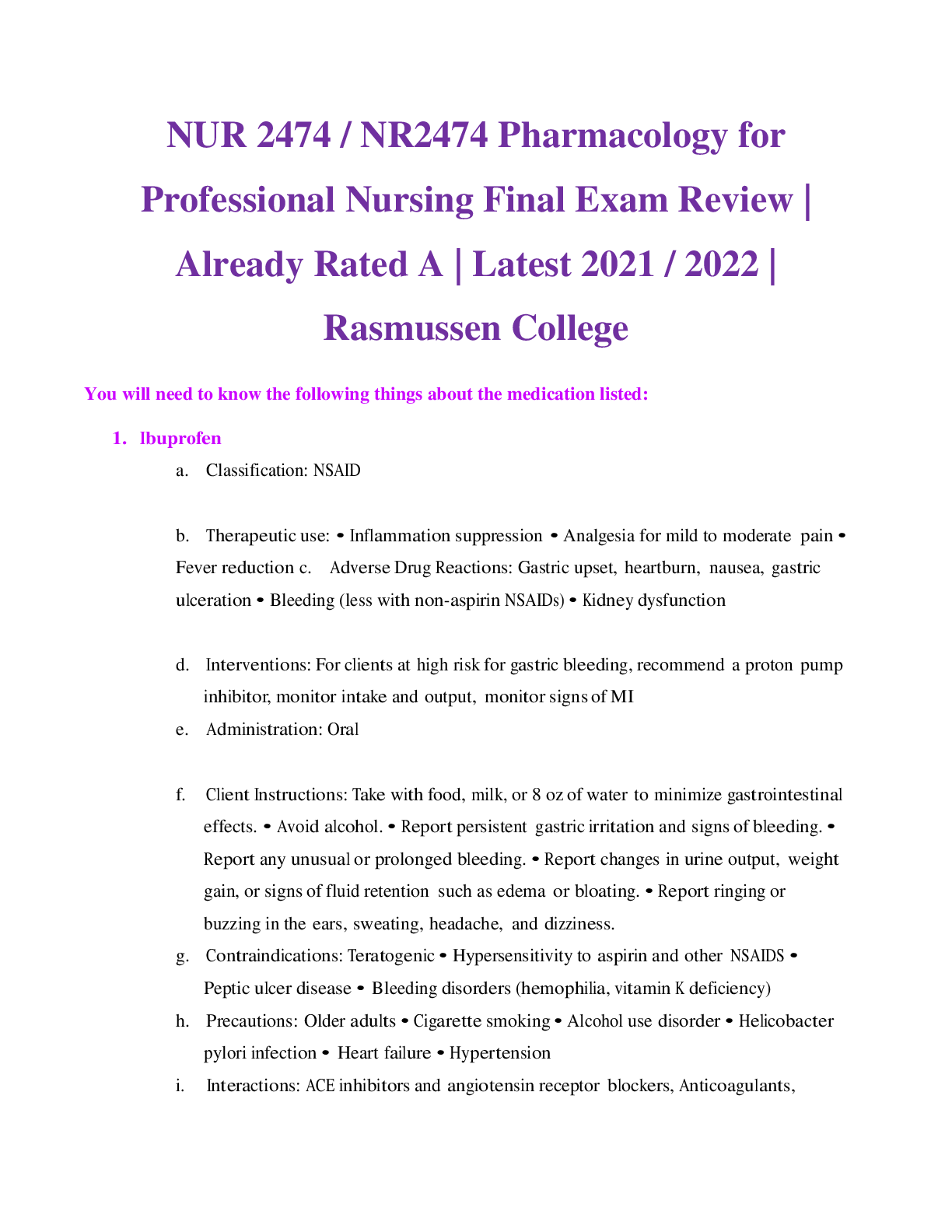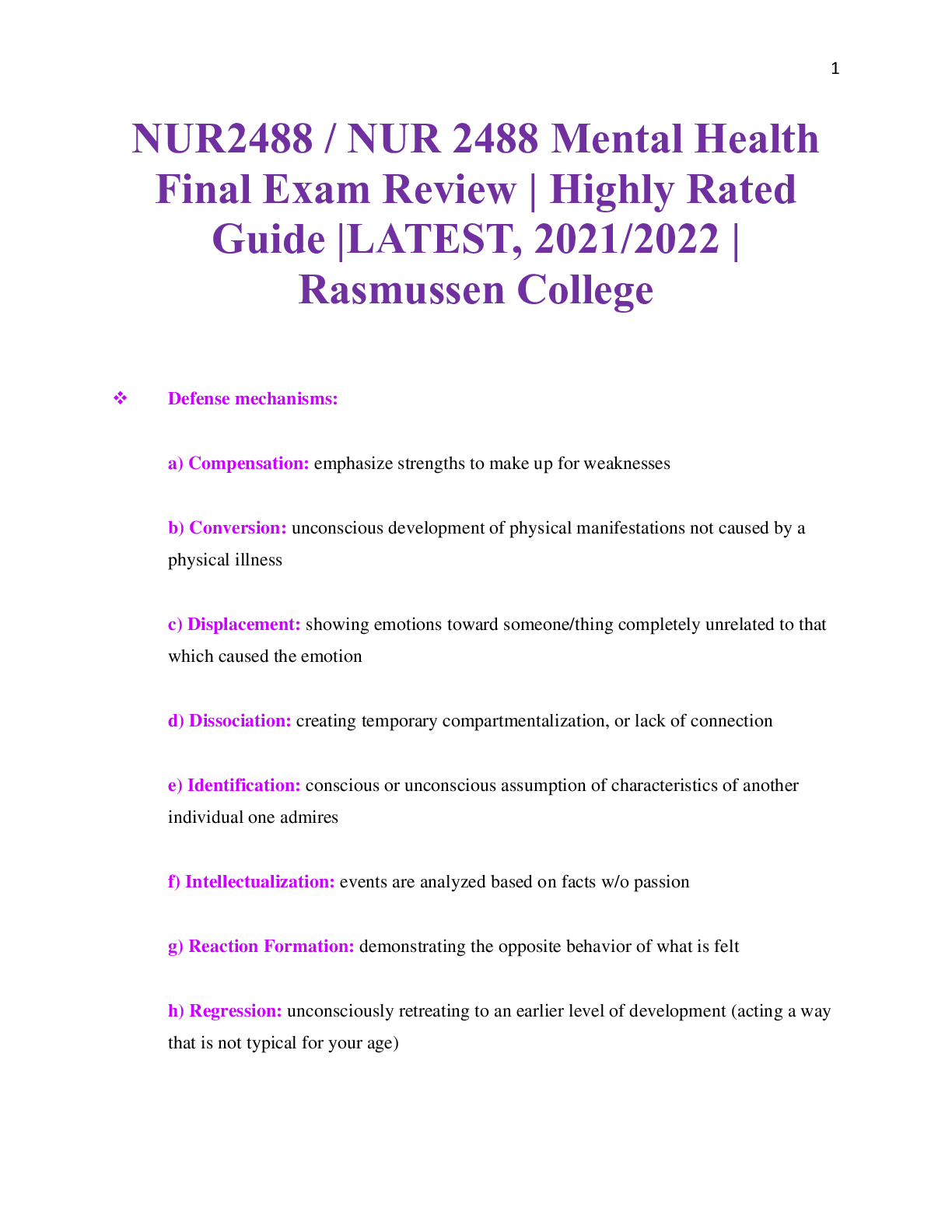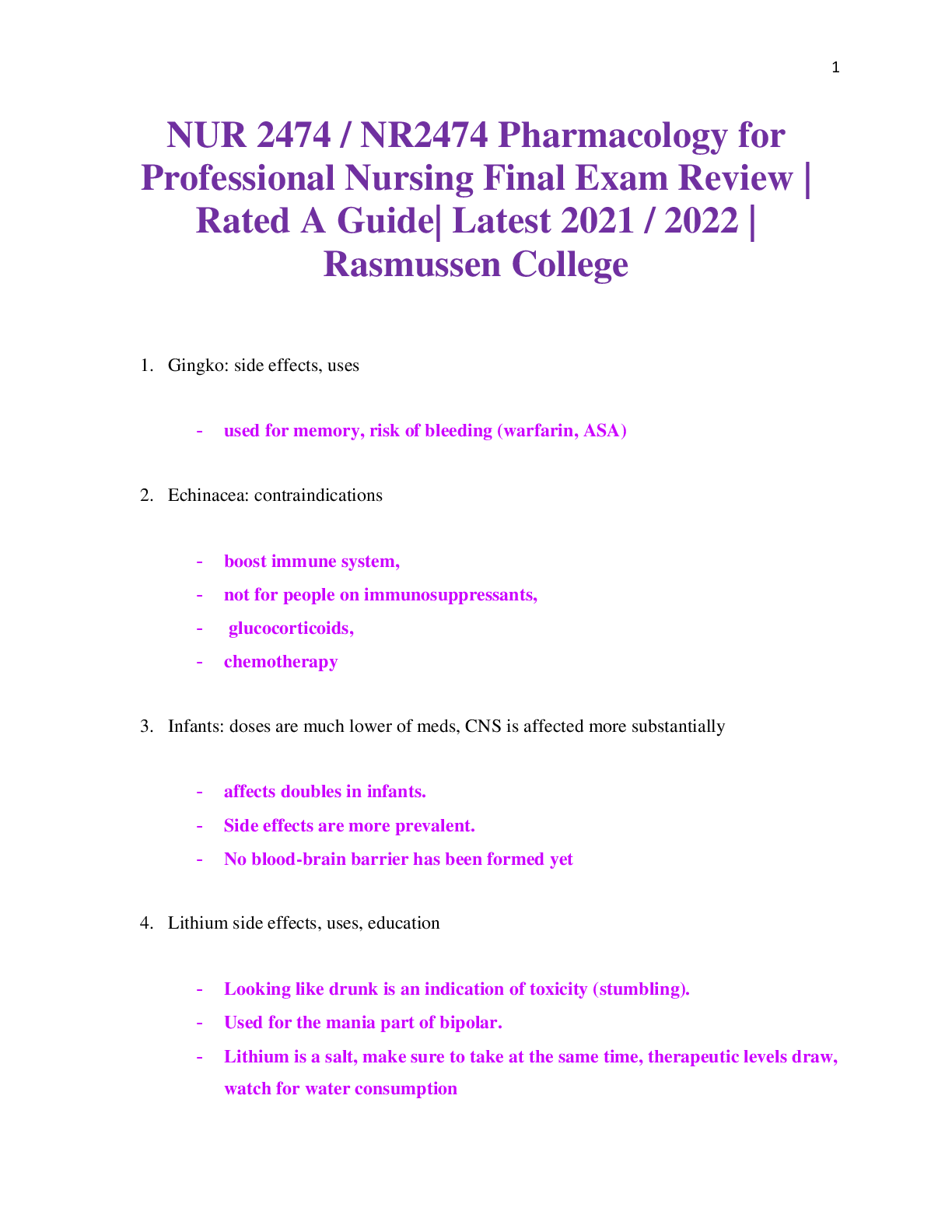*NURSING > EXAM REVIEW > NR601 / NR 601 Primary Care of the Maturing and Aged Family Practicum Final Exam Review | Rated A| L (All)
NR601 / NR 601 Primary Care of the Maturing and Aged Family Practicum Final Exam Review | Rated A| LATEST| Chamberlain College of Nursing
Document Content and Description Below
NR601 / NR 601 Primary Care of the Maturing and Aged Family Practicum Final Exam Review | Rated A| LATEST| Chamberlain College of Nursing 1. Acanthosis nigricans - A sign of insulin resistance tha... t can be seen in African Americans - associated with colon cancer, obesity and DM 2. Delirium treatment- Kennedy 560. - Identify causes, prevent delirium though complications of identified disorders. \ - Focus on safety. - Frequent reassurance and re-orientation. - First generation --haloperidol. - Second generation (olanazapine, risperidone, ziprasidone and quitiapine) antipsychotics to control behavioral symptoms. 3. Essential tremor vs. Parkinson’s Disease - Essential tremor is an action tremor 6 to 8 Hz, Parkinson’s tremor is a resting tremor which is 3 to 6 Hz. Kennedy p. 425 4. Seizure causes - In older adults stroke is the most common underlying cause of seizures. - Other causes include neurodegenerative disorders, brain tumors and head injuries. Kennedy p 438 5. Hospice & palliative care- - Hospice: o Last 6 mos of life. Uses palliative care principles to support pt and family. Includes bereavement services. Covered by Medicare/Medicaid, most private insurance. Interdisciplinary care, medical service, supplies, drugs - Palliative Care: o To relieve pain and improve QOL. Used early in dz process. Interdisciplinary Care. Provides care for the entire dz process, from diagnosis to death, including bereavement services. 6. Pain- - Pain assessment tools: o Visual Analogue Scale o Numerical Analogue Scale o Wong Baker FACES o Pain Assessment in Advanced Dementia scale - Types of pain: o Somatic, o Visceral, o Neuropathic 7. Framework for pharmacological interventions for pain: - The WHO Step Ladder o 1st step: NSAIDs and Tylenol for mild pain o 2nd step: Opioids added, usually with APAP for moderate to severe pain with functional impairment and or decreased QOL o 3rd step: Opioid pain meds, sometimes around the clock for severe pain - Adjuvant meds: o Tricyclic antidepressants, Nortriptyline,Desipramine,Duloxetine,Gabapentinm, Pregabalin, Lidocaine 5% patch, Capsaicin cream, Corticosteroids, Calcitonin, Baclofen 8. Pain management in elderly - Delirium vs. dementia- • Delirium- o rapid onset (hours to days). o Poor memory, disorientation, speech disturbance, perceptual disturbance. [Show More]
Last updated: 1 month ago
Preview 1 out of 22 pages
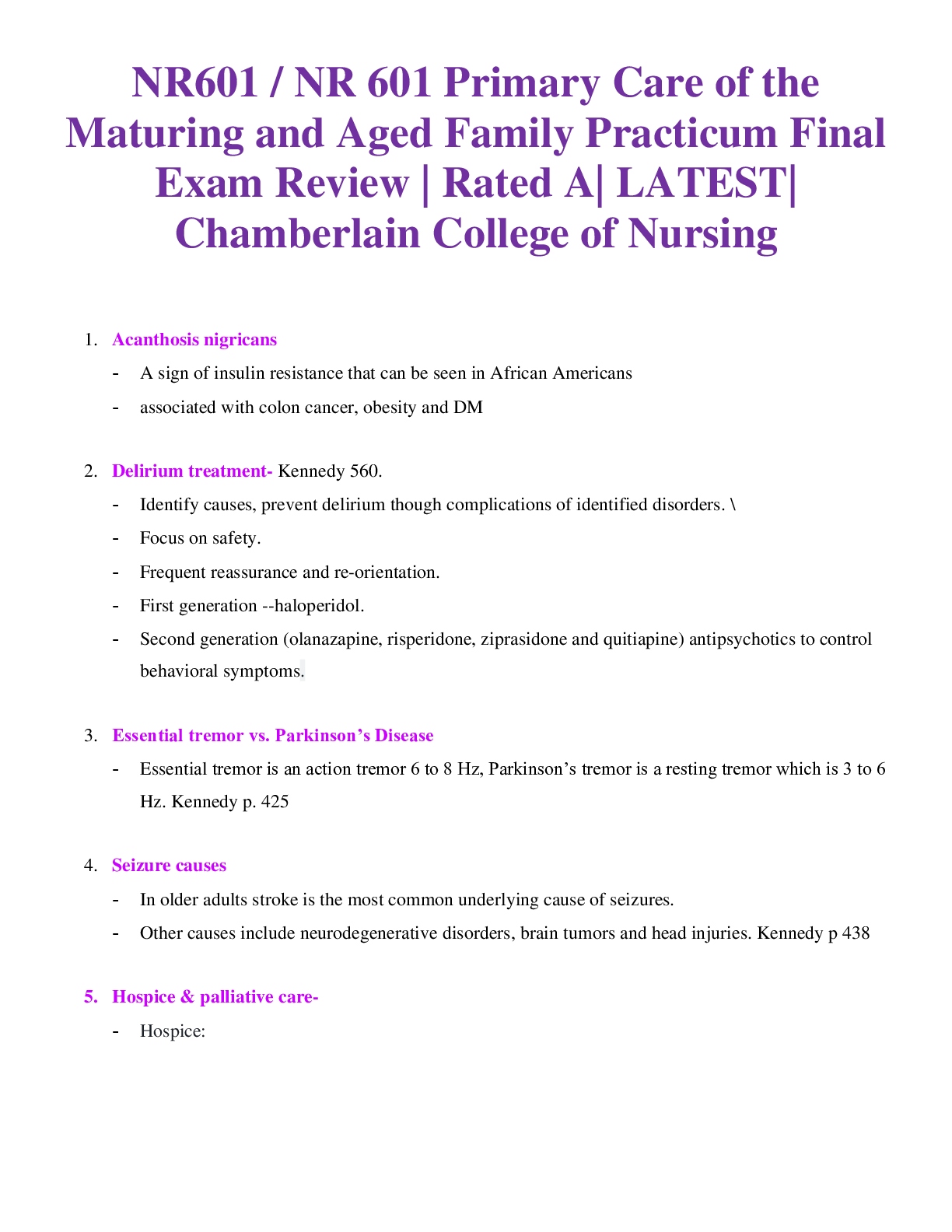
Reviews( 0 )
Document information
Connected school, study & course
About the document
Uploaded On
Feb 07, 2021
Number of pages
22
Written in
Additional information
This document has been written for:
Uploaded
Feb 07, 2021
Downloads
0
Views
68


